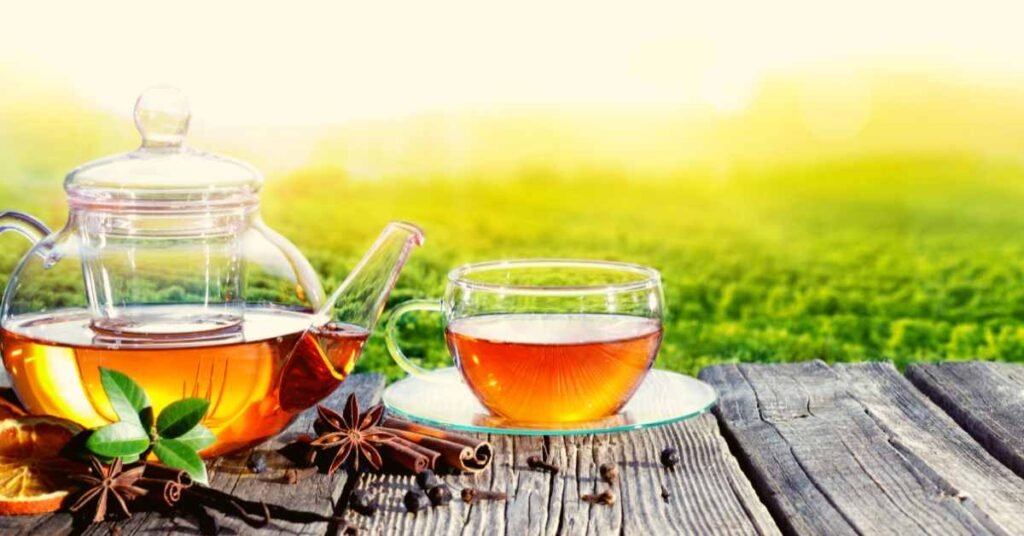Tea, the world’s second-most consumed beverage after water, has a rich history and diverse culture associated with its cultivation and consumption.
One of the key processes that significantly influences the flavor, aroma, and color of tea is oxidation.
In this article, we will delve into the intricate details of tea oxidation, exploring its types, the oxidation process, and the profound impact it has on the final product.
Understanding Tea Oxidation

When tea leaves are exposed to oxygen, this process is known as natural oxidation.
This plays a pivotal role in shaping the distinct characteristics of different types of tea.
The primary compounds responsible for oxidation in tea are polyphenols, specifically catechins, which undergo enzymatic oxidation when they come into contact with oxygen.
Types of Tea Oxidation
Tea can be broadly classified into three main categories based on the level of oxidation: non-oxidized or minimally oxidized tea, partially oxidized tea, and fully oxidized tea.
Non-oxidized or Minimally Oxidized Tea:
Green Tea: Green tea is known for its vibrant green color and fresh, grassy flavor. The oxidation level is minimal, as the tea leaves are quickly heated or steamed after harvest to deactivate the enzymes responsible for oxidation.
Partially Oxidized Tea:
Oolong Tea: Oolong tea falls between green and black tea in terms of oxidation. The leaves are partially oxidized, resulting in a wide range of flavors from floral and fruity to woody and toasty.
Fully Oxidized Tea:
Black Tea: Black tea undergoes complete oxidation, leading to a dark color and robust flavor profile. The oxidation process is allowed to continue until the leaves turn black, and the flavor develops complexities such as malty, sweet, or smoky notes.
The Oxidation Process

The oxidation process is a carefully controlled transformation that occurs at various stages of tea production. It involves a series of steps, each contributing to the overall character of the final tea.
Withering: a. Freshly harvested tea leaves are spread out to wither, allowing moisture to evaporate.
This step prepares the leaves for subsequent processing by reducing their water content.
Rolling: a. The withered leaves are rolled to break the cell walls, facilitating the release of enzymes and initiating oxidation.
Rolling also shapes the tea leaves into the desired form, be it twisted, ball-rolled, or curled.
Oxidation: a. During oxidation, enzymes present in the tea leaves react with oxygen. The degree of oxidation is crucial and varies based on the type of tea being produced. This stage significantly influences the final flavor, aroma, and color of the tea.
Fixation: a. To halt the oxidation process, the leaves are subjected to heat, either through steaming or pan-firing. This step preserves the desired characteristics of the tea and prevents further enzymatic activity.
Drying: a. The final step involves drying the tea leaves to remove any remaining moisture. This ensures the stability of the tea and preserves its quality during storage.
Purpose of Tea Oxidation
Tea oxidation serves several purposes, each contributing to the unique qualities of the final product.
Flavor Development: Oxidation transforms the chemical composition of the tea leaves, leading to the development of distinct flavors. Green tea, with minimal oxidation, retains a fresh and grassy taste, while black tea, fully oxidized, boasts a robust and complex flavor profile.

Aroma Enhancement: The volatile compounds formed during oxidation contribute to the aroma of the tea. Floral, fruity, earthy, and smoky notes emerge, enriching the olfactory experience.
Color Variation: The color of tea is closely tied to the level of oxidation. Green teas maintain a bright green hue, oolongs range from light to dark amber, and black teas exhibit a deep, rich brown to black color.
Shelf Life: Oxidation, when controlled and stopped at the right time, can enhance the shelf life of tea. By reducing the moisture content, the risk of mold and deterioration is minimized.
Final Word
Tea oxidation is a fascinating interplay of science and art that transforms fresh tea leaves into a diverse array of flavors and aromas.
From the delicate freshness of green tea to the bold richness of black tea, the oxidation process is a critical factor in shaping the world’s favorite beverage.
Understanding the intricacies of tea oxidation allows enthusiasts to appreciate the craftsmanship involved in producing a cup of tea and provides a deeper connection to the cultural and historical significance of this ancient beverage.
MEDICAL DISCLAIMER
Itsnevernotteatime.com cannot and does not contain medical/health advice. The medical/health information is provided for general and educational purposes only and is not a substitute for professional advice.




